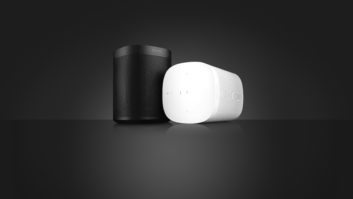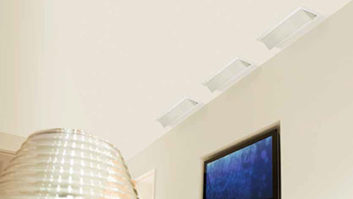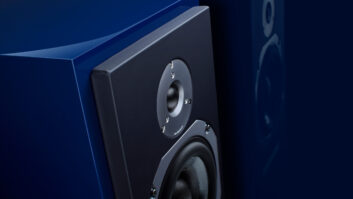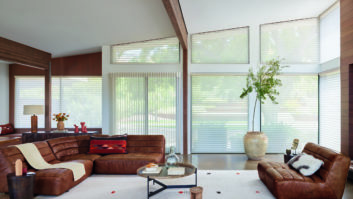There’s so very little “custom” manufacturing being done in the custom integration business these days that a company like James Loudspeaker really stands out. The Napa, CA-based loudspeaker manufacturer’s business model is focused on its ability to “create solutions for inflexible situations, to think way outside of the box, and to find practical solutions for [its] integrators when an off-the-shelf speaker just wouldn’t do the trick,” according to CEO Mark Schafle. While the James catalog consists of “standard” speaker models born from its process of creating solutions for customers, it’s really in the one-off custom jobs where the company shines. Yet, despite what might seem like an inefficient business approach, Schafle says he is able to remain profitable by adhering to strict policies, such as providing quotations in 24 hours and turning product from concept to shipment in less than three weeks. Find out what else RS editorial director Jeremy Glowacki learned about this process and how James Loudspeaker is able to remain true to its unique approach.

James Loudspeaker CEO Mark Schafle
Jeremy Glowacki: How did James Loudspeaker get started offering customized speaker solutions to integrators?
Mark Schafle: Firstly, we felt that we needed a way to differentiate the James Loudspeaker brand from the competitive field of speaker manufacturers, and we identified a void in the market in terms of domestically built solutions. Having made an analysis indicating that most brands were outsourcing both engineering and manufacturing, we decided to leverage our strength in both areas, invest in our domestic manufacturing capabilities, and offer as much service to our integrator customers as we could.
The concept took off for us immediately. I think it would be highly unlikely to find an overseas supplier that could provide the engineering, manufacturing, and rapid delivery to match what we do here in Napa, CA. Having our innately creative team of engineers sitting a few feet away from the manufacturing plant affords us countless advantages when it comes to innovation, application, and delivery of new products. We were driven to create solutions for inflexible situations, to think way outside of the box, and find practical solutions for our integrators when an off-the-shelf speaker just wouldn’t do the trick. We think our success can be measured in how many of our product concepts have been copied by other brands.
What value does a customized speaker solution add to the integrator’s toolbox as they bid and compete in the marketplace?
Interior designers aren’t accepting the status quo. They are looking for AV integrators who can deliver solutions that meet the unique requirements of each room in each home. The concept of mass-market, high-margin speaker solutions simply doesn’t work for many applications and the combination of our broad range of standard products along with our custom solutions satisfies the needs of discerning clients.
The James Loudspeaker Small Aperture, AT-Series landscape, PowerPipe subwoofers, and SPL-Series soundbars were all born from this process of creating solutions for our customers. Through our years of implementing real solutions for the CEDIA community, our integrators have come to appreciate that we are doing far more than just moving products off the shelf.

This speaker was custom built for an outdoor theater on the fly bridge of a 450-foot super yacht. Each speaker represents one channel (mono) featuring dual 12-inch PowerPipe subwoofers and 25-millimeter quad tweeters mated to a 0.5-inch thick aluminum enclosure. Engineered for very high-output and to withstand extreme environmental rigors, the C-1616SBE is a perfect example of a James Loudspeaker custom solution.
How difficult is it to offer customized speaker solutions, yet remain profitable?
Well in a word, challenging! We often encounter restricted budgets, short lead times, incomplete details, and unrealistic expectations. But we decided to meet these challenges head on as the foundation of our business model. James Loudspeaker provides quotations in less than 24 hours. We execute designs quickly, generally less than 24 hours. The company provides performance parameters and renderings (if requested), generally in less than 24 hours. And, we turn the product from concept to shipment on an average of two to three weeks.
And we do all of this without burying our supportive dealers in huge engineering costs by chalking up the overhead as a marketing expense. These custom concepts often lead to new product ideas that benefit the community as a whole. And let me emphasize, these are engineered solutions–we provide detailed performance parameters and layouts. Again, a marketing expense to us. We make a fair margin on our standard products, learn a great deal from the custom work, and consider this the best way to grow our business. The growth has been significant. We have expanded our prototype and engineering capabilities, added in five new engineers, 3D printers, and four new CNC machines over the past year.

James had a customer with a unique décor in a theater and needed something as a centerpiece for his steampunk-themed room. Everything is custom made including non-functioning gears, steam valve, and tube amplifier. These speakers serve the theater as the main L/R channels.
How long does it take to execute a custom loudspeaker solution?—Can you walk us through the process?
Firstly, engineering must understand the goal of the product–what the integrator has in mind. This often is a collaborative process with the integrator as we seek to create a viable loudspeaker solution that addresses their application. Most concerns center on the architectural requirements, such as style and finish. Now that our team has completed thousands of custom products, we can confidently walk our integrators through multiple options.
Once a solution has been agreed upon, we put the product into the AutoCAD drawing phase. We have reduced the time involved in this part of the process by utilizing a large bank of existing drawings and custom work, which has greatly lessened the turnaround time. Amazingly, we can often provide drawings within two to four hours for the integrator to review. Once approved by the integrator, we convert the AutoCAD drawing into a file for our CNC machines. We maintain a large stock of raw materials in order to minimize manufacturing delays. The machining/ production/finishing process time is generally two to three days. Turnaround can be impacted by the backlog of custom jobs at any given moment. As an example, right now we are running roughly a two-to-three-week queue in custom work.
Our newest CNC machine will reduce this lead time, focusing primarily on soundbars as we seek to reduce the lead time on these products down to two to three days max by September. We have also expanded our finishing area in the first quarter of 2016, increasing efficiency there as well. One critical step that can take some time is the process of voicing a loudspeaker. Once a design (form factor) has been completed, our engineers focus on sound quality. We have created proprietary equipment for this process that includes crossover design and manufacturing all onsite here in Napa, CA. Each loudspeaker project varies in complexity, but our goal is to deliver the finest standard or custom solution that helps our integrators win jobs and satisfy clients. Based on our significant growth over consecutive years, we feel like we have created the right niche for the James Loudspeaker brand.







